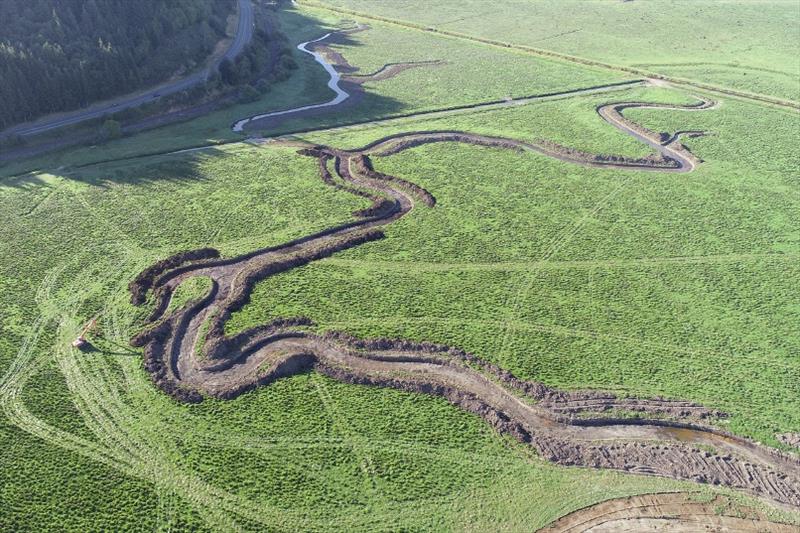
Completed Oregon Project to benefit fish, farmers
by NOAA Fisheries 29 Sep 2018 11:10 UTC

Aerial view of construction of new habitat channels at Winter Lake © BCI Contracting, Inc
Partners representing natural resource, tribal, and agricultural stakeholders recently gathered in the Coquille River Valley in Oregon to celebrate the completion of the Winter Lake restoration project that will help ensure local cattle farmers continue to thrive, while providing almost eight miles of tidal channels and 1,700 acres of habitat for the threatened Oregon Coast coho salmon, and other fish and wildlife.
Habitat restoration and agriculture are often considered competing interests. This partnership between natural resource entities and agricultural landowners demonstrates that the two can benefit from a strategically planned project.
Lowlands in and around the Valley's Beaver Slough Drainage District are rich pasture for cattle, and are in high demand. In the past, levees were built, channels straightened, and acres of wetlands were filled to create agricultural land.
But the tidal gates managing water and helping keep the land dry for grazing started failing recently and had to be replaced. The Drainage District saw this opportunity to establish a new partnership to reimagine how water is managed there.
Their vision of 'working landscapes' was to improve water control and protect the land from flooding during prime grazing season in the warmer months, and rebuild high-quality habitat for juvenile coho salmon in the winter.
The project's cornerstone is a set of new state-of-the-art tide gates that can better control flooding, allowing for seasonal use by agriculture, and fish and wildlife. The tide gates, working with reconnected channels and new habitat will provide the best of both worlds.
NOAA helped Beaver Slough Drainage District, the Nature Conservancy, Oregon Department of Fish and Wildlife and nearby land owner China Creek Gun Club develop plans for this comprehensive project, and supported it further with restoration and resilience grants totalling $2.7 million.
It is expected that the project could generate up to $3.4 million and 25 new jobs in the regional economy, and could then contribute an additional $3.2 million due to increased outdoor recreation spending over a twenty year period.
Along the Pacific Northwest coast wild salmon populations continue to decline. Like many northwestern rivers, the Coquille has lost much of its estuary habitat; nearly 95 percent of prime salmon spawning and rearing waters there are gone.
Habitat restoration through innovative public-private partnership projects like this are the key to success, and eventually will assist in the recovery of salmon and other fish species critical to this region's ecosystems and communities.